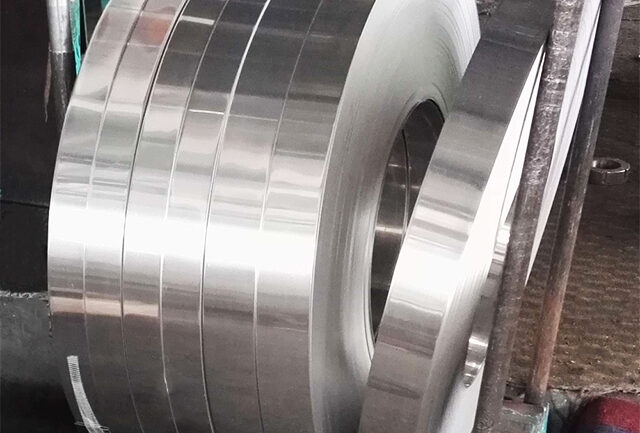301 stainless steel strip is a sub-stable austenitic stainless steel with a fully austenitic organization under full solid solution conditions.
The austenitic stainless steel has a fully austenitic organization under full solid solution conditions.
In the austenitic stainless steel, 301 is Z easy cold deformation strengthening steel, through cold deformation processing can make the steel strength, hardness, and retain sufficient plastic, toughness, plus this steel has good rust resistance in atmospheric conditions, but stainless steel micro-wire in reducing media corrosion resistance is poor, in acid, alkali, salt and other chemical media corrosion resistance is poor, so it is not recommended for corrosion of harsh environments.

Applications of 301 stainless steel strip.
301 stainless steel strip is Z widely used stainless steel, heat-resistant steel. 301 stainless steel (17Cr-7Ni-carbon) material compared with 304 stainless steel strip, Cr, Ni content less, cold processing tensile strength and hardness increased, non-magnetic, but magnetic after cold processing can be used for trains, aircraft, conveyor belts, vehicles, bolts, springs, screens.
301 stainless steel strip in the cutting process has the following characteristics.
Cutting force: stainless steel in the cutting process of plastic deformation, austenitic stainless steel (its elongation is greater than 1.5 times that of 45 steel), so that the cutting force increases. At the same time, the machining hardening of stainless steel is serious, high thermal strength, further increasing the cutting resistance, the chip curl fracture is also more difficult.
Cutting temperature is high: cutting plastic deformation and friction between the tool are very large, resulting in more cutting heat; plus the thermal conductivity of stainless steel is about ½ to ¼ of 45 steel, a lot of cutting heat are concentrated in the cutting area and knife – chip contact interface, poor heat dissipation conditions. Under the same conditions, the cutting temperature of 1Cr18Ni9Ti is about 200℃ higher than that of No. 45 steel.
The chip is not easy to break, easy to bond: 301 stainless steel belt plasticity, toughness are very large, when the car processing chip continuous, will affect the smooth operation, the chip will also squeeze has been processed surface. At high temperatures and pressures, stainless steel and other metals with good affinity, easy to produce adhesion, and the formation of chip tumors, both intensify tool wear, but also tearing phenomenon and has been processing surface deterioration.
Tool wear: cutting stainless steel and the process of affinity, so that the chip between the bonding, diffusion, so that the tool produced bonding wear, diffusion wear, resulting in the tool before the tool surface crescent pits, cutting edge will also form a small flaking and gap; plus stainless steel carbide (such as TiC) particles of high hardness, cutting directly in contact with the tool, friction, abrasion tool, there are processing hardening phenomenon. All will make the tool wear intensified.
Large coefficient of linear expansion: 301 stainless steel with a coefficient of linear expansion of about 1.5 times for carbon steel, in the cutting temperature, the workpiece is easy to produce thermal deformation, dimensional accuracy is more difficult to control.